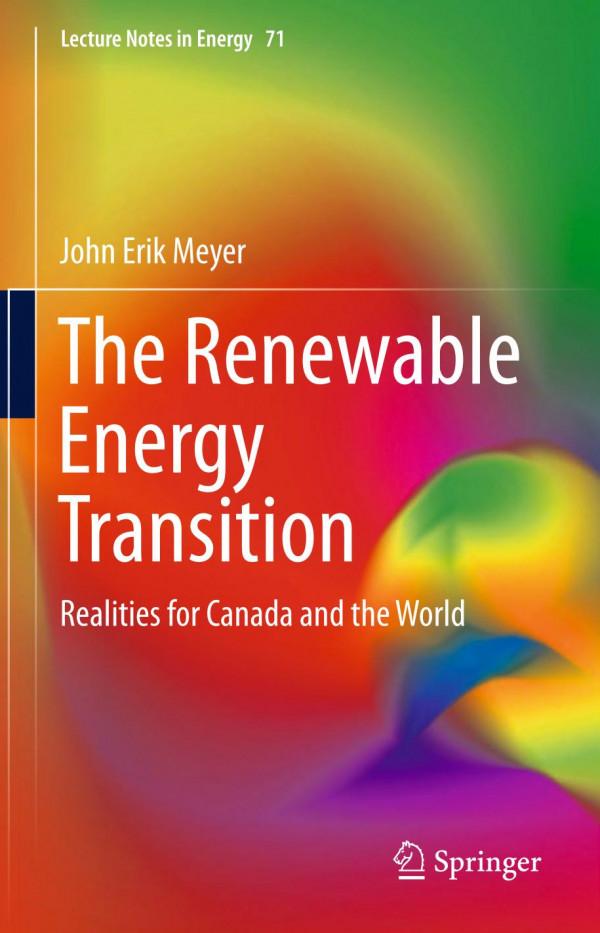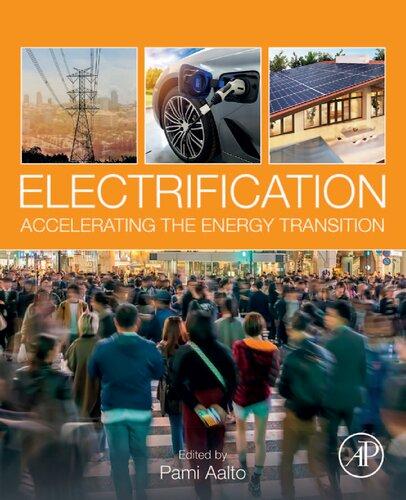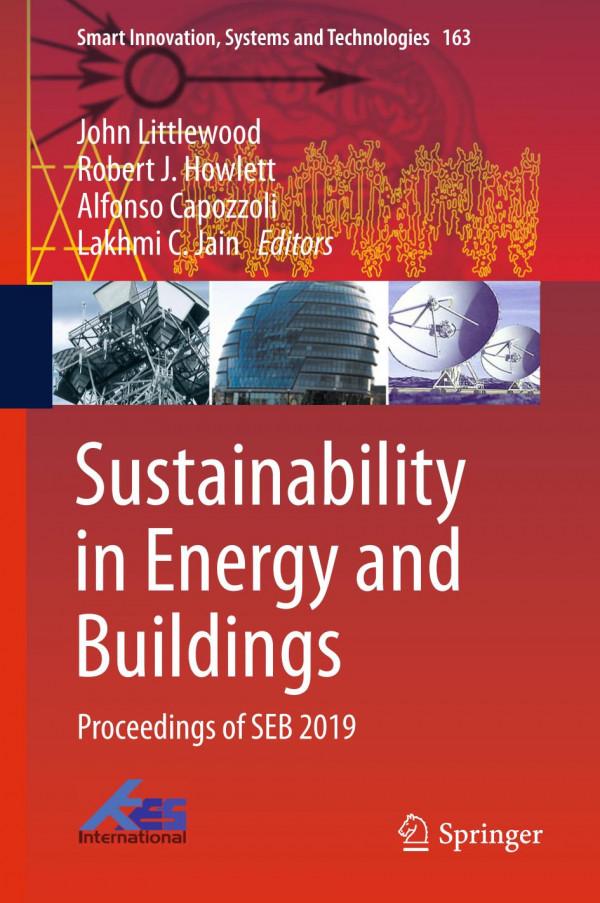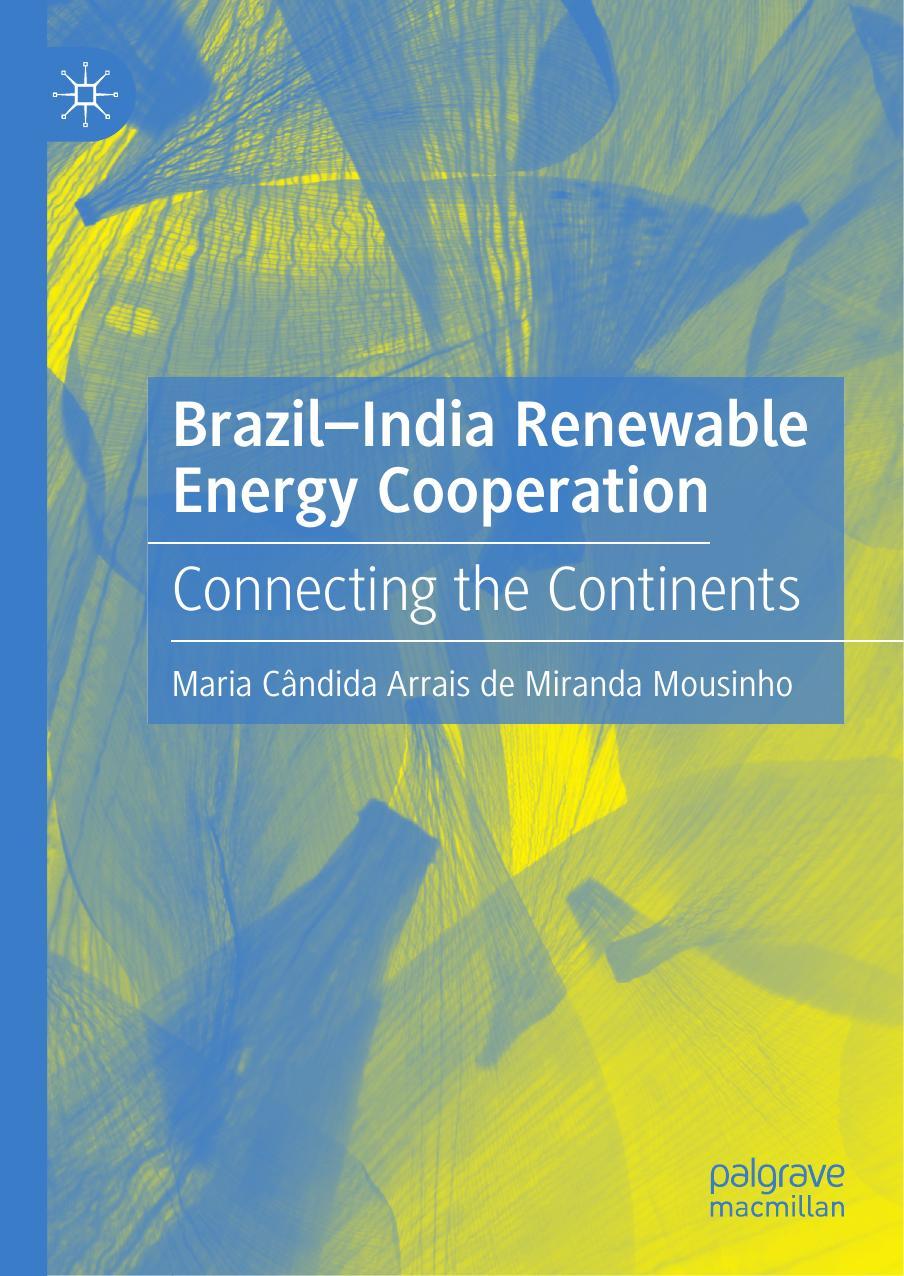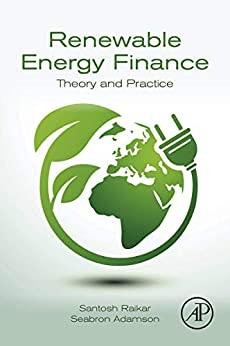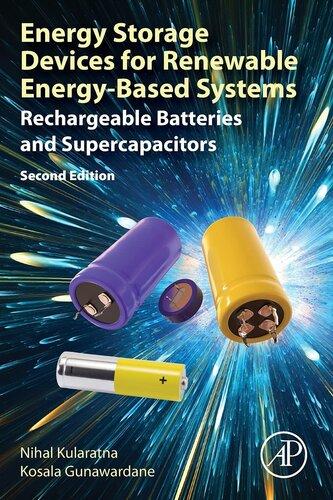The Renewable Energy Transition
Realities for Canada and the World
John Erik Meyer
Canadians for a Sustainable Society
Parry Sound, ON, Canada
ISSN 2195-1284
Lecture Notes in Energy
ISSN 2195-1292 (electronic)
ISBN 978-3-030-29114-3 ISBN 978-3-030-29115-0 (eBook) https://doi.org/10.1007/978-3-030-29115-0
© Springer Nature Switzerland AG 2020
This work is subject to copyright. All rights are reserved by the Publisher, whether the whole or part of the material is concerned, specifically the rights of translation, reprinting, reuse of illustrations, recitation, broadcasting, reproduction on microfilms or in any other physical way, and transmission or information storage and retrieval, electronic adaptation, computer software, or by similar or dissimilar methodology now known or hereafter developed.
The use of general descriptive names, registered names, trademarks, service marks, etc. in this publication does not imply, even in the absence of a specific statement, that such names are exempt from the relevant protective laws and regulations and therefore free for general use.
The publisher, the authors, and the editors are safe to assume that the advice and information in this book are believed to be true and accurate at the date of publication. Neither the publisher nor the authors or the editors give a warranty, express or implied, with respect to the material contained herein or for any errors or omissions that may have been made. The publisher remains neutral with regard to jurisdictional claims in published maps and institutional affiliations.
This Springer imprint is published by the registered company Springer Nature Switzerland AG The registered company address is: Gewerbestrasse 11, 6330 Cham, Switzerland
To Katie, for your hope, enthusiasm, and support. You and your friends deserve better than the tools we are passing on to you.
Preface
The growth of monetary systems, energy use, science, human numbers, and general human welfare has occurred concurrently over the past several centuries. The heady progress of human systems has allowed us to dominate the world around us and to ignore perhaps, the health of the seemingly invisible natural stocks and flows which support us. But changes in our environment are becoming more obvious and we have not yet developed a means to value it and prioritize our interaction with the natural world.
Modern society is awash in statistics, measures, and quantification, but public policy making has focused most of this data processing in the area of the commercial marketplace using fiat currency as the core metric. In the era of apparent endless abundance, quantification of things that were in endless supply made little sense. But now, limits to our energy supplies and resource bases are beginning to appear on the horizon. It behooves us to expand our singular focus on consumption to include a comprehensive representation of the natural assets and processes which make that consumption possible.
Doing so will require new tools and a new perspective on how we live, and what allows us to live, on this planet. Unlike the commercial marketplace which is constructed of trillions of money-based transactions annually, the natural world we interact with is a complex of energy transactions and stocks of mineral and biological reserves. These physical stocks and flows can only be represented by physical measures. When they enter the commercial marketplace, they acquire monetized valuation but beyond the human realm, where natural wealth is created and maintained, real physical measures are required to understand their origins and health.
Two points which are clear to the vast majority of people on this planet are that the climate is changing and that depletion of fossil fuel resources is inevitable. What the impacts will be of these trends, the time span over which they will occur, and who should bear the cost of mitigating these problems are points of contention currently roiling both domestic and international politics. Confusion surrounding responsibilities and appropriate actions are resulting in the failure of governments
to make timely progress on these critical issues. But at the root of this lack of action is the ability of policy makers to quantify the full scale of the problem. Monetary metrics don’t represent natural systems. Essentially, we can’t address what we don’t understand and, in modern society, we can’t understand that which we can’t measure.
Progress lies in the direction of being able to represent physical processes, in their entirety, in a manner that all those studying the issue can absorb. Metrics which capture the essence of the critical issues have been developed by researchers but not adopted by mainstream policy makers, most of whom cling to monetary metrics. For these policy makers, representative or not, the only full set of numbers they have to work with are monetary. Physical representations, although they might be much more accurate and informative, are currently narrow and may send very different signals than monetary metrics.
As national policy makers begin to pay attention to the physical world around us, commercial leaders are still locked into monetary metrics and use those metrics to plan for what they assume will be the continuance of the trajectory upon which the fossil fuel mother lode launched us. Options apparent to those using physical measures look entirely different. Hence, the need to differentiate between the two measurement systems, the responsibilities of those who use them, and the different time horizons each is working with. Public policy needs to be informed by a clear representation of the physical world around us because that is what both nations and the global community ultimately interact with. The recognition of the existence of different systems should allow an information based and non-polarized conversation to be established. The choice is not either / or.
This book was written with the intent of giving policy makers and those interested in history and our future options more insight into the limits of markets and monetary systems. The importance of energy to Canada and other countries can best be understood if presented in an historical context and also in relation to available resources and the energetic demands of the climate in northern regions.
Energy, climate, and resource education is fundamental to a society’s ability to anticipate and adjust to a changing world. This book presents several new approaches to illuminate the problems and potential solutions in the energy transition but does not strive to deliver a silver bullet solution offering a sure means of success. Currently, our experience and models are in some way away from being capable of delivering this. Rather, areas of promise, areas in need of further development, and the habits and expectations which must change are highlighted to produce, if not a solution, perhaps a broader perspective. This broader biophysical perspective reveals a clear direction and several stepping stones along the path to the eventual development of a sustainable society.
The options humanity will have before it in the near future very much depend on the progress made in transitioning to renewable energy over the next two short
Preface
decades. If significant progress is to be made, leaders need to have answers to several questions clear in their minds:
– How long do we have to change our consumption patterns before the climate is changed irreparably?
– How long will it be before fossil fuel resources decline in quality to the point of destabilizing energy flows and unsettling financial and production systems?
– How long will it take for a society to transition away from fossil fuels to the degree that both climate and energy supply threats are greatly reduced?
Simply asking these questions will better frame the issues and allow constructive discussion to grow into positive, coherent, and timely action.
Parry Sound, ON, Canada John Erik Meyer
About the Author
John Erik Meyer has been circling the issues of per capita resources, social equality, and leadership since high school. A BA in Economics and years of working with physical units and dollar accounting and costing systems brought the different abilities of these measurement processes into sharp relief. He is a patent holder and has had a number of articles published in Canada’s major newspapers dealing with a range of topics from population, immigration, and the environment to the failings of GDP-based metrics for social policy formation. He has also presented a paper on Energy Currency at a conference of that name in Split, Croatia. He maintains a site www.theperfectcurrency.org which focuses on the concept of energy-based currency. Mr. Meyer is currently President of the NGO “Canadians for a Sustainable Society” and owner and designer at a small medium tech manufacturing company. He also dabbles in solar electric and heating systems as well as electric bikes and has designed and built a house which he expects to be (eventually) energy positive. His primary interests are the changes necessary to achieve a sustainable society, population cycles, biophysical economics, and the reasons for failed human social structures throughout history.
List of Figures
Fig. 1.1 Louis Parker, Iroquois Canoe
Fig. 1.2 JD Kelly thecanadasite.com John Cabot—The Europeans arrive in larger ships and stay.
Fig. 1.3 World population by latitude from Graham Palmer .
Fig. 1.4 Population density by latitude
Fig. 1.5 Latitude, productivity, and species richness (Gillman 2014) . .
Fig. 1.6 Members of the royal tour of 1901 during a stop in Glacier, British Columbia. (Library and Archives Canada). “Here are more details to last week’s story of Prime Minister J.A. MacDonald and Lady Agnes MacDonald’s trip on the Canadian Pacific Intercontinental Railway to the British Columbia coast. At one stop at Lake Louise, Lady Macdonald was studying the broad front of the locomotive with the cowcatcher and decided that it would be exciting to ride from that vantage point of the locomotive while going through the Kicking Horse Pass. The Prime Minister was not keen on the idea, but the railway superintendent thought it best she be accompanied and so he rode with her after arranging secure seating for both of them. She was fascinated by the journey, and later the Prime Minister accompanied her on the cowcatcher, although he said he preferred the comfort of the observation car. Lady Agnes MacDonald wrote of her experiences on the railway trip through the Rockies in an article entitled, “By Car and Cow Catcher” in Murray’s Magazine.” The article, and a photo of the MacDonalds, may be seen in “Tales of the Canadian Rockies” by Brian Patton.
13
18
Fig. 2.1 Solar radiation potential map (Loster 2006)
Fig. 2.2 Monthly average high temperature, Igloolik, Guadalajara (Degreedays 2019)
Fig. 2.3 Solar capacity factor by month, Igloolik, Guadalajara (NREL 2019)
Fig. 2.4 Train travel times
Fig. 2.5 First oil well in Canada (author)
Fig. 2.6 Canadian oil production to 1948 (StatCan 2017)
Figs. 2.7 and 2.8 Opening of first Leduc well (Alberta History 2019)
Fig. 2.9 Early research into processing of oil sands (Alberta History 2019) (Scientist Karl Clark of the Alberta Research Council (above) pioneered a method for separating bitumen from sand. This process was key to the eventual development of large-scale oil sands mining projects)
Fig. 2.10
oil sands processing plant (O’Connor 2015)
Fig. 2.11 Oil sands extent in Alberta (CAPP 2019)
Fig. 2.12 Oil sands geologic profile (Schmitt 2013)
Fig. 2.13
sands depth (Natural Resources Canada 2019)
Fig. 2.14 Oil sands in situ method (Natural Resources Canada 2019)
Fig. 2.15 Off-shore oil field infrastructure (Heritage Newfoundland and Labrador 2019)
Fig. 2.16 Natural gas geologic profile (EIA 2019) 51
Fig. 2.17 Hydroelectric capacity by province (NEB 2019) 56
Fig. 2.18 Operation of a Candu Nuclear Reactor (UNENE 2019) 59
Fig. 2.19 House roof optimized for solar energy collection (author) 61
Fig. 2.20 House rooves with difficult upgrade path to solar energy collection (author) 62
Fig. 2.21 Solar irradiance by latitude (Ayala 2005) 63
Fig. 2.22 Natural gas and oil pipelines (Oil Sands Magazine 2018) 68
Fig. 2.23 The Electrical Grid Canada and Northern USA (GENI 2019) 68
Fig. 3.1 Primary energy sources in Canada (Hughes 2018) 76
Fig. 3.2 Final energy consumption in Canada (Hughes 2018) 77
Fig. 3.3 Energy consumption by end use (Hughes 2018) 77
Fig. 3.4 Daily energy budgets through history (Unger and Thistle 2013) 80
Fig. 3.5 Energy use per day by country (BP 2018)
Fig. 3.6 Degree heating days by (BizEEE 2019)
Fig. 3.7 Hydroelectric energy produced per person per day by country (BP 2018)
Fig. 3.8 Monthly average high temperature Igloolik, Wilmington (Degreedays 2019)
Fig. 3.9 Solar capacity factor Igloolik, Wilmington (NREL 2019)
Fig. 3.10 History of copper ore grade in Canada (Mudd 2017)
Fig. 4.1 Spearpoint from 2.5 million years ago (unknown) .
Fig. 4.2 Spearpoint from 12,000 years ago (unknown) .
Fig. 4.3 Space Shuttle launch (unknown) .
Fig. 4.4 Climate Stability Tightrope of the past 10,000 years shown using Greenland ice core to determine the surface temperature of the ice (−30 °C to −55 °C) (Hansen 2019) .
Fig. 4.5 Average depth of oil and gas wells in the USA by year (EIA 2019). In 2019, to exploit oil and gas, we have to drill deeper and more often to produce less energy
Fig. 4.6 Bakken fracked oil field, lower output per well (Berman 2019) .
Fig. 4.7 Tons of ore per ounce of gold by year (Barrick Gold 2018) .
Fig. 4.8 Fossil fuel consumption reduction time difference by choice or by scarcity (BP 2018) 111
Fig. 5.1 Energy intensity of life in northern regions vs southern regions. The streets of Burlington, Ontario on a winter evening compared to the streets of Guadalajara, Mexico on an average day. Burlington is within 150 km of the most southerly point in Canada 118
Fig. 5.2 Maturing of one type of solar pv technology (Han 2014)
Fig. 5.3 The Climate Action Tracker (CAT 2018) Thermometer 2018. (Copyright © 2018 by Climate Analytics, Ecofys, a Navigant company, and NewClimate Institute)
Fig. 5.4 Greenhouse gas emissions per capita by country (CAT 2018)
123
126
127
Fig. 5.5 Canadian greenhouse gas emission history with major growth components broken out (WRI 2017; Statistics Canada 2017) 129
Fig. 5.6 Net Canadian greenhouse gas emissions from forests by year (Natural Resources Canada 2018) 130
Fig. 5.7 Pictograph of forecast German renewable infrastructure (Agora 2018)
Fig. 5.8 Emission change by country (Global Carbon Project 2018) 144
Fig. 5.9 Emission change by Canadian province (Statistics Canada 2017) 148
Fig. 5.10 Hydroelectric production per day per capita by Canadian province (Statistics Canada 2017) 149
Fig. 5.11 Country share of world installed solar pv capacity (IRENA 2018; BP 2018)
Fig. 5.12 Annual production of fully electric and hybrid electric vehicles (Irle 2019)
Fig. 6.1 Pre-industrial age regions spawning empires (Loster 2006). Pre-fossil fuels, the Great Empires of the world flourished in the most agriculturally richest regions, typically the belt of mid-latitudes north of the equator. Peoples living outside of these accommodating regions, effectively the Empire Belt, were not able to build up the population density, specialty of trades or free time necessary to develop advanced technologies and social structures .
Fig. 6.2 Hypothetical makeup of energy supply during a 24-h period (author). Consumer demand peaks in the morning and in the evening and solar power peaks in the middle of the day. The wind is variable throughout the 24 h day. The coal plant output is an unchanging base load while the nuclear output changes slowly. Output from both natural gas and hydro plants reacts quickly to the consumer demand and renewable fluctuations.
Fig. 6.3 Storing ice blocks cut on Lake Simcoe, Central Ontario (Barrie Archives 2019)
Fig. 6.4 Daily energy budget per capita by country (BP 2018). The southern nations consume far less energy per capita than do the northern nations, with the northern resource extraction based economies of Canada and Norway having the highest energy demand
Fig. 6.5 Daily residential energy budget per capita by country (EIA 2015). Northern nations use many times the amount of energy to heat their homes than do residents of more moderate regions. In fact, many countries close to the equator have little need of energy for heat or even heating systems themselves
Fig. 6.6 Daily transportation energy budget per capita by country (EIA 2015). More northern countries expend more energy on transportation both out of necessity and for leisure pursuits. “Car culture” is more dominant in the USA than in any other country. Also, the US train transport network is less comprehensive than in most countries and rail is four times more efficient than truck.
171
172
175
175
176
Fig. 6.7 Daily energy per capita budget by sector Brazil (EIA 2015) . . . . . . 177
Fig. 6.8 Daily energy per capita budget by sector Canada (EIA 2015) .
Fig. 6.9 Daily energy per capita budget by sector China (EIA 2015) . .
178
179
Fig. 6.10 Daily energy per capita budget by sector Germany (EIA 2015) . . . 179
Fig. 6.11 Daily energy per capita budget by sector Japan (EIA 2015) . . . . . . 180
Fig. 6.12 Daily energy per capita budget by sector Mexico (EIA 2015) . . . . 181
Fig. 6.13 Daily energy per capita budget by sector Norway (EIA 2015) . .
Fig. 6.14 Daily energy per capita budget by sector Russia (EIA 2015) .
181
182
Fig. 6.15 Daily energy per capita budget by sector Spain (EIA 2015) . . . . . . 183
Fig. 6.16 Daily energy per capita budget by sector UK (EIA 2015) . . . . . . . . 183
Fig. 6.17 Daily energy per capita budget by sector USA (EIA 2015) . .
Fig. 6.18 Hydroelectric daily per capita budget by country (BP 2018). Hydro capacity is a key resource in the renewable transition . .
Fig. 6.19 Ease of transition to renewable energy by country (author) . .
Fig. 6.20 Current per capita energy budgets by country vs 85% reduction in fossil fuel use (BP 2018). 85% Fossil Fuel Free involves a large reduction in energy production but not necessarily a large reduction in the final output of the economy or of the quality of life. Depending on the country!. .
Fig. 6.21 Range of wind infrastructure forecast by different models (Hughes 2016) from David Hughes presentation “Canada’s Energy Future: The Path to Transition”
Fig. 7.1 Nal cartoon, survival is bad for business (unknown) “What you environmentalists have to understand is the destruction of the planet may be the price we have to pay for a healthy economy”—Quote from NAL
Fig. 7.2 Terraforming earth, fracking wells in Texas (EcoFlight 2012)
193
200
Fig. 7.3 EROI pyramid of potential social sophistication (Lambert 2014) as a function of EROI of society’s main fuels. The lower tier estimates are fairly solid (Hall 2009) and more elevated values increasingly speculative and dependent on externalities such as government and culture 214
Fig. 7.4 Declining EROI of conventional oil and gas and with oil sands (Poisson 2013) 215
Fig. 7.5 Inuit EROI for community survival (author)
Fig. 7.6 Oil from oil sands, energy, and emission lifecycle (author)
Fig. 7.7 Natural gas-driven electric automobile energy and emissions lifecycle (author)
Fig. 7.8 Energy intensity of various methods of transport (MacKay 2009)
Fig. 7.9 Solar- and wind-fed hydrogen automobile lifecycle (author)
Fig. 7.10 Solar lifecycle efficiency with various storage methods (author)
Fig. 7.11 Energy intensity of manufacturing in China vs. developed country (Wagner 2012)
Fig. 7.12 Solar PV capacity factor in different locations of North America (EIA 2019)
Fig. 7.13 The EROI Mountain illustrating how we have burned through the richest resources (author)
Fig. 8.1 North Korean generals with elaborate service awards (Coles 2019) .
Fig. 8.2 Natural gas production history of Alberta and Norway (BP 2018) .
Fig. 8.3 Total oil production history of Canada, Alberta Conventional, and Norway (BP 2018; Hughes 2018) .
Fig. 8.4 Profit and loss broken down to per individual Albertan for the three sectors of the energy industry (Alberta Government 2018) .
Fig. 8.5 Volatility of Canadian dollar which is effectively a petro-currency (BOC 2019) .
Fig. 8.6 Norway’s sovereign “The Fund” vs. Alberta Heritage Fund performance comparison (The Fund 2019)
Fig. 9.1 Rudimentary solar powered vehicles from the ground up (Howe 2014)
Fig. 9.2 A man plowing his field. Sustainably, how much can a lead-acid battery tractor plow? (Howe 2014)
274
Fig. 9.3 A man and his data collection system. There are three Tesla PowerWalls totaling 39 kWh of storage behind Art (author) 276
Fig. 9.4 Solar panels on a conventional bungalow roof with Mitsubishi EV in the driveway (author)
Fig. 9.5 Geothermal glycol circulation plumbing (author). Not your average basement plumbing. Complex systems are required, but they must be simple to operate or made to be completely operationally invisible.
Fig. 9.6 Sophisticated heating system needs to be made accessible by all (author)
Fig. 9.7 Solar PV array and electric battery storage required in different locations (author)
276
277
277
281
Fig. 9.8 Solar PV array and hydrogen storage required in different locations for one single residence (author) 282
Fig. 9.9 Rooftop utilization in Sustainable City, UAE (Sustainable City 2019)
Fig. 9.10 Energy-based design of both community and buildings in Sustainable City, UAE (Sustainable City, https://www.thesustainablecity.ae/, 2019)
Fig. 9.11 Drake Landing monitoring software (Nguyen 2017) .
Fig. 9.12 Plugged in cars in the winter, block heaters now, batteries soon
Fig. 9.13 Solar capacity factor by province—even the highest is about half that of the US South West (NREL 2019) .
286
286
Fig. 10.1 Highly variable and unpredictable inputs and demand (author) .
Fig. 10.2 Heat scavenging from solar PV panels increases system efficiency (author) .
Fig. 10.3 Drake Landing solar hot water panels on garages and solar PV on home (Mesquita et al. 2017) .
Fig. 10.4 The complex grid in the renewable energy era (author)
Fig. 10.5 Energy distribution plans change over a 24 h period (EnergyBrainPool 2019)
Fig. 10.6 The energy cliff, once we begin to use lower grade sources (Mearns 2019)
Fig. 11.1 House optimized for energy harvesting and conservation (author)
Fig. 11.2 Energy intensity by country and by income group (Unger and Thistle 2013)
Fig. 12.1 A key relationship, energy required vs. energy available (author)
Fig. 12.2 Imported and exported embodied energy and ghg emissions from carbonbrief.org (Caldeira and Davis 2010)
Fig. 12.3 Large per capita net embodied CO2 importers (Davis 2010)
Fig. 12.4 Total energy demand in fossil fuel economy vs. electrified economy (author)
Fig. 12.5 Per capita energy budgets peak with maximum fossil fuel and decline (StatCan 2019; Beaujot and Patterson 2018)
List of Tables
Table 1.1 Population density
Table 3.1 Cumulative energy consumption in Canada
Table 3.2 kWh scale
Table 3.3 Energy budgets through history per person per day in kilowatt-hours
Table 3.4 Original reserves, current reserves, and how long they will last
Table 3.5 Degree heating days by latitude (BizEEE 2019)
Table 5.1 Australia emissions record
Table 5.2 Brazil emissions record
Table 5.3
Table 5.4
Table 5.5
Table 5.6 India
Table 5.7
Table 5.8
Table 5.9
Table 5.10
Table 5.11
Table 5.12
Table 5.13
Table 6.1 Ease of
Table 6.2 Estimate of number of wind turbines required in 85% FFF era
Table 7.1 EROI
Table 8.1 Conflicting interests (author)
Table 8.2 Time horizons for different groups (author)
Table 8.3 Infrastructure conversion time estimates indicate potential for stranded assets (author) .
Table 9.1 Ease of conversion to electric of various economic sectors (author) .
Table 9.2 Array and storage costs for different locations
Table 9.3 Solar PV and hydrogen storage in different locations for one single family residence
Table 9.4 Progress to date on energy efficiency by sector (IEA)
Table 10.1 Heat scavenging from solar PV panels increases system efficiency (author)
Table 10.2 Time to bring on line (author) .
Table 11.1 History of nation building vs. market building (author)
Table 11.2 Population growth over seven doublings
Table 11.3 Annual energy demand through grid (calculations by author from national statistics)
Table 11.4 Infrastructure
Table 12.1 Types
